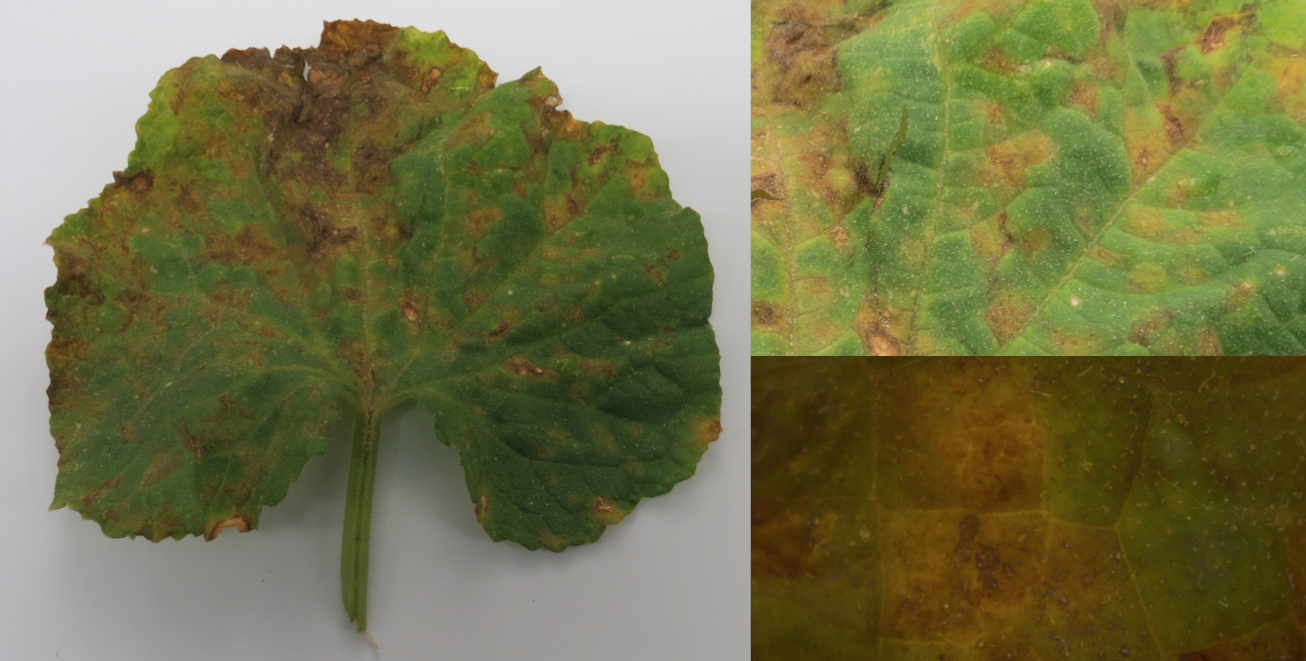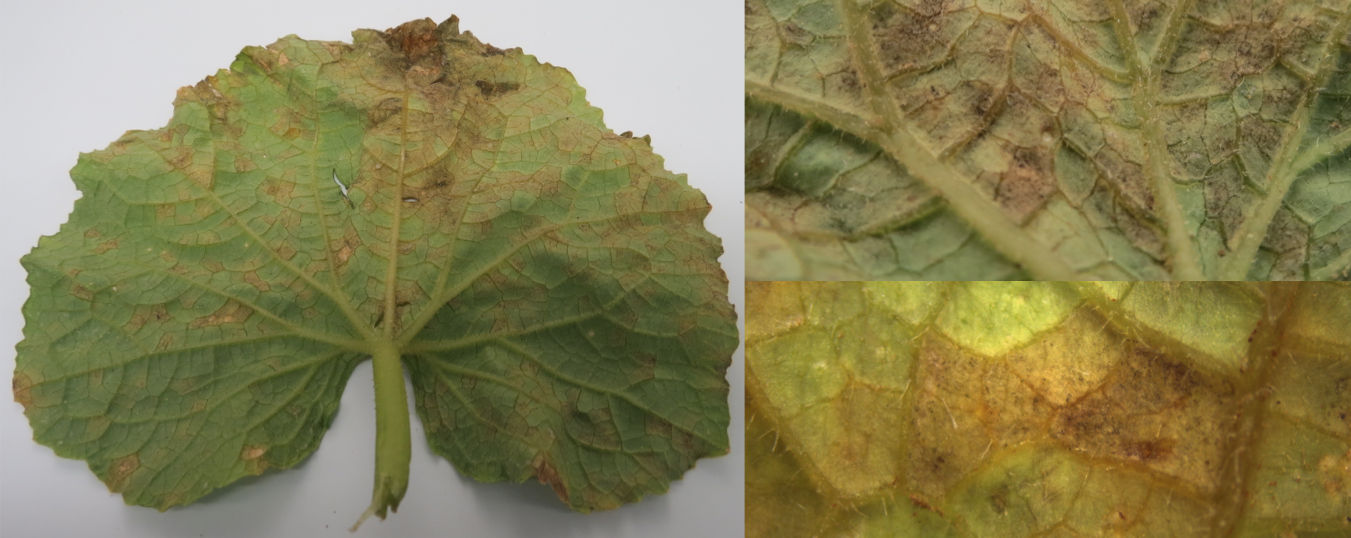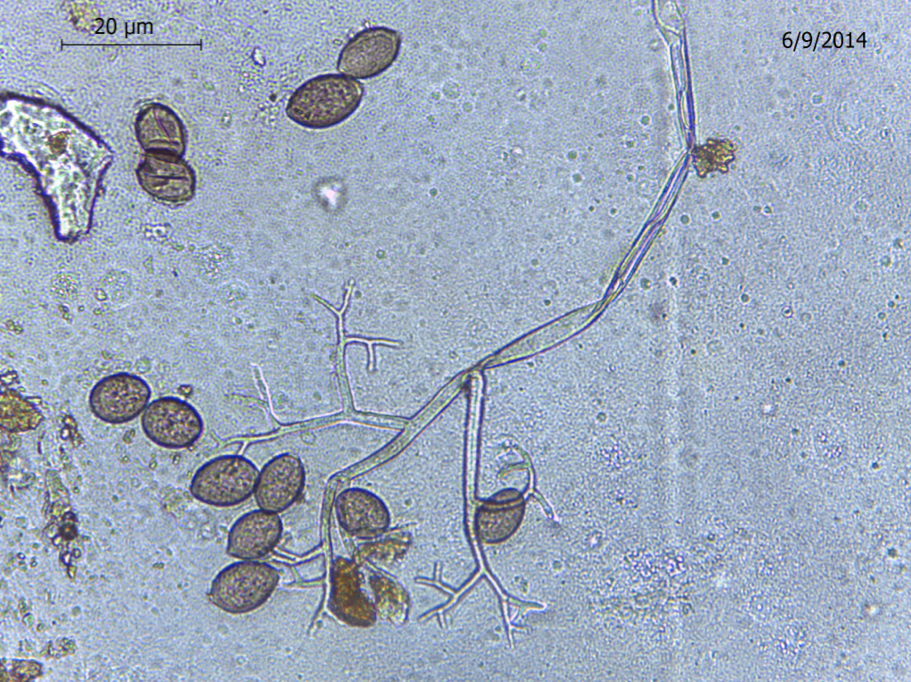Cucurbit Downy Mildew Outbreak in Southeastern North Carolina
go.ncsu.edu/readext?303136
en Español / em Português
El inglés es el idioma de control de esta página. En la medida en que haya algún conflicto entre la traducción al inglés y la traducción, el inglés prevalece.
Al hacer clic en el enlace de traducción se activa un servicio de traducción gratuito para convertir la página al español. Al igual que con cualquier traducción por Internet, la conversión no es sensible al contexto y puede que no traduzca el texto en su significado original. NC State Extension no garantiza la exactitud del texto traducido. Por favor, tenga en cuenta que algunas aplicaciones y/o servicios pueden no funcionar como se espera cuando se traducen.
Português
Inglês é o idioma de controle desta página. Na medida que haja algum conflito entre o texto original em Inglês e a tradução, o Inglês prevalece.
Ao clicar no link de tradução, um serviço gratuito de tradução será ativado para converter a página para o Português. Como em qualquer tradução pela internet, a conversão não é sensivel ao contexto e pode não ocorrer a tradução para o significado orginal. O serviço de Extensão da Carolina do Norte (NC State Extension) não garante a exatidão do texto traduzido. Por favor, observe que algumas funções ou serviços podem não funcionar como esperado após a tradução.
English
English is the controlling language of this page. To the extent there is any conflict between the English text and the translation, English controls.
Clicking on the translation link activates a free translation service to convert the page to Spanish. As with any Internet translation, the conversion is not context-sensitive and may not translate the text to its original meaning. NC State Extension does not guarantee the accuracy of the translated text. Please note that some applications and/or services may not function as expected when translated.
Collapse ▲Written by Emma Wallace and Dr. Lina Quesada-Ocampo
Cucurbit downy mildew was reported today (June 9, 2014) in a commercial cucumber field in Duplin County, North Carolina and confirmed by the Quesada Lab at NCSU.
Symptoms were typical of downy mildew, including angular chlorotic lesions on the leaves and a grayish-brown “downy” appearance on the abaxial surface. Structures of the oomycete Pseudoperonospora cubensis, the causal agent of cucurbit downy mildew, were identified using dissecting and compound microscopes, confirming the disease.

Cucumber leaf collected from Duplin County, North Carolina on June 8th, 2014, adaxial side. Note angular, chlorotic lesions. In some cases, the lesions have started to turn necrotic and merge into one large infected area (Emma Wallace, NCSU Vegetable Pathology Lab)

Cucumber leaf collected from Duplin County, North Carolina on June 8th, 2014, abaxial side. Note angular, chlorotic lesions with a grayish-brown “downy” appearance (Emma Wallace, NCSU Vegetable Pathology Lab)

Structures of Pseudoperonospora cubensis, the oomycete that causes cucurbit downy mildew. Observed at 100x using a compound microscope (Emma Wallace, NCSU Vegetable Pathology Lab)
The disease seems to be just starting and only 1% of the field was affected; however, individual leaves presented about 80% disease severity. Growers are recommended to take immediate action to protect cucurbit crops in NC, especially since we will experience favorable weather for disease in the next two weeks. Typically cucumbers, watermelons and melons are more susceptible to the disease than squash and pumpkin.
For more information about the disease and how to control it see our Cucurbit Downy Mildew fact sheet, previous alerts, and results from our demonstration trials. Control recommendations are also available in the Cucurbit downy mildew IPM pipe website, where you can also register to receive text, email and/or phone alerts when new disease outbreaks are reported.
If you think you have cucurbit downy mildew in your cucurbits please contact your local Extension Agent and send photos and/or physical samples to the Plant Disease and Insect Clinic. If cucurbit downy mildew is confirmed in your samples by an expert, please make sure a report is sent to the Cucurbit downy mildew IPM pipe website.
With the arrival of downy mildew in North Carolina this year, we encourage commercial growers and homeowners alike to be diligent in checking cucurbit leaves for downy mildew and reporting this disease to the Cucurbit downy mildew IPM pipe website. These reports are crucial to warn growers of an outbreak, and serve as valuable data for research on the epidemiology of this pathogen, which contributes to developing disease management strategies. With your help, we can lessen the effects of downy mildew!


